Lesson planning is an essential component of successful teaching. It sets the course for what will be taught and how it will be delivered, ensuring a systematic and consistent approach to learning. But not all lesson plans are created equal. An engaging lesson plan not only teaches but also inspires and captures the attention of students. Here's a teacher's ultimate guide on how to design engaging lesson plans.
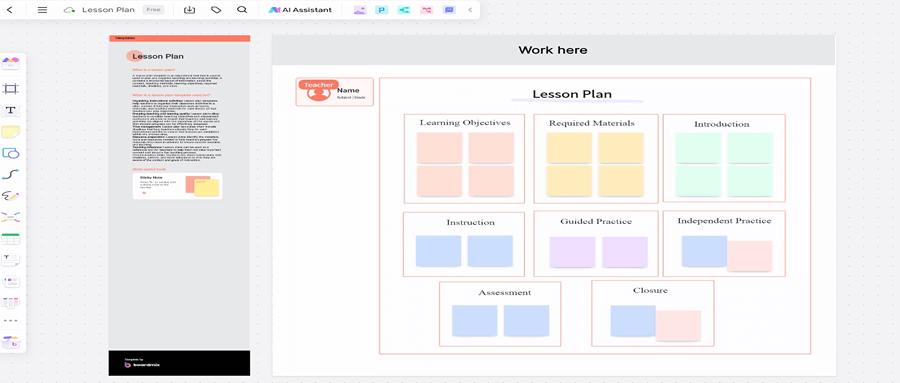
Understanding the Importance of an Engaging Lesson Plan
An engaging lesson plan serves as a blueprint for teaching that fosters active participation and deep learning. It enables teachers to:
1. Stimulate Student Interest: With intriguing topics and interactive activities, students become more interested in learning.
2. Promote Active Learning: An engaging lesson plan encourages students to participate actively rather than passively consume information.
3. Foster Critical Thinking: When lessons are engaging, students are more likely to analyze information, ask questions, and develop critical thinking skills.
4. Boost Student Confidence: Engaging lessons that involve hands-on activities can increase student confidence as they gain mastery over the topic.
Key Elements of an Engaging Lesson Plan
While lesson plans may differ based on subject matter or grade level, they all share certain elements that make them engaging:
1. Learning Objectives
Clearly defined learning objectives provide direction for your lesson and set expectations for student learning. These should be Specific, Measurable, Achievable, Relevant, and Time-bound (SMART).
2. Relevant Content
Ensure the content of your lesson is not only aligned with the learning objectives but also relevant and interesting to your students. Linking content to real-world scenarios can make lessons more engaging.
3. Active Learning Strategies
Instead of traditional lecture-style teaching, incorporate strategies that promote active learning such as group work, discussions, problem-solving exercises, or hands-on activities.
4. Interactive Materials
Use diverse teaching materials like videos, interactive software, simulations, or models to cater to different learning styles and keep students interested.
5. Formative Assessment
Assessment isn't just about grading; it’s a way to gauge student understanding and guide instruction. Include formative assessments like quizzes, interactive games, or exit tickets in your plan.
6. Reflection
Plan time for students to reflect on what they’ve learned and how they can apply it. This promotes deeper understanding and retention.
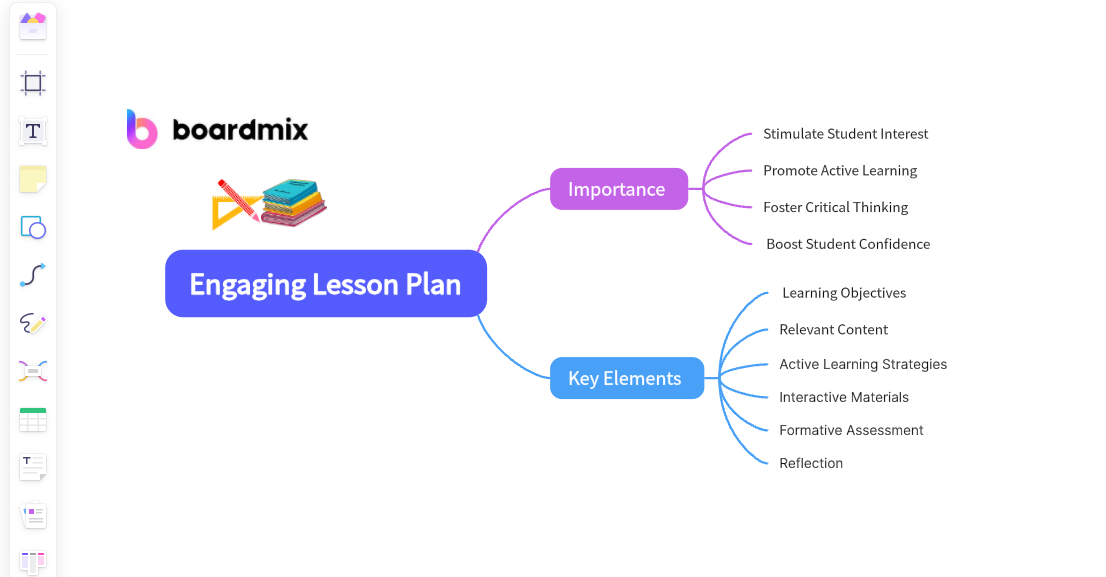
Writing Engaging Lesson Plans with Templates on Boardmix
Boardmix, an AI-powered tool, provides a smart and convenient way to create lesson plans using predefined templates. Here's a step-by-step guide on how you can leverage this platform to create efficient lesson plans.
Step 1: Log in to Your Boardmix Account
The first step involves logging into your Boardmix account. If you do not have an account, sign up using your email address.
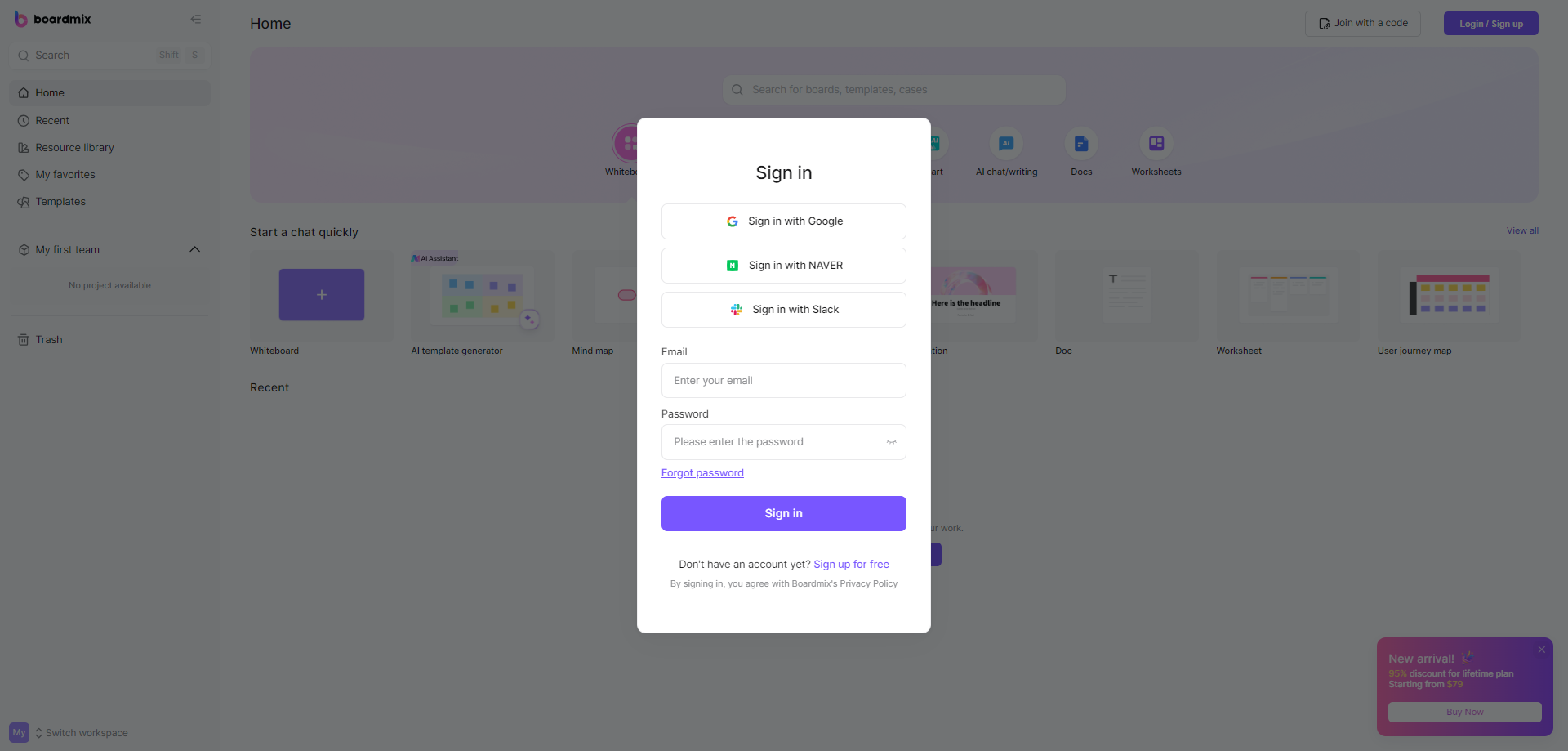
Step 2: Select the 'New board' Option
Once logged in, navigate to your dashboard and click on 'New board'. This will open a new file where you can begin crafting your lesson plan.

Step 3: Choose a Lesson Plan Template
Boardmix provides various templates designed to suit different teaching styles and lesson formats. Browse through these options and select the one that fits your lesson objectives and content best.
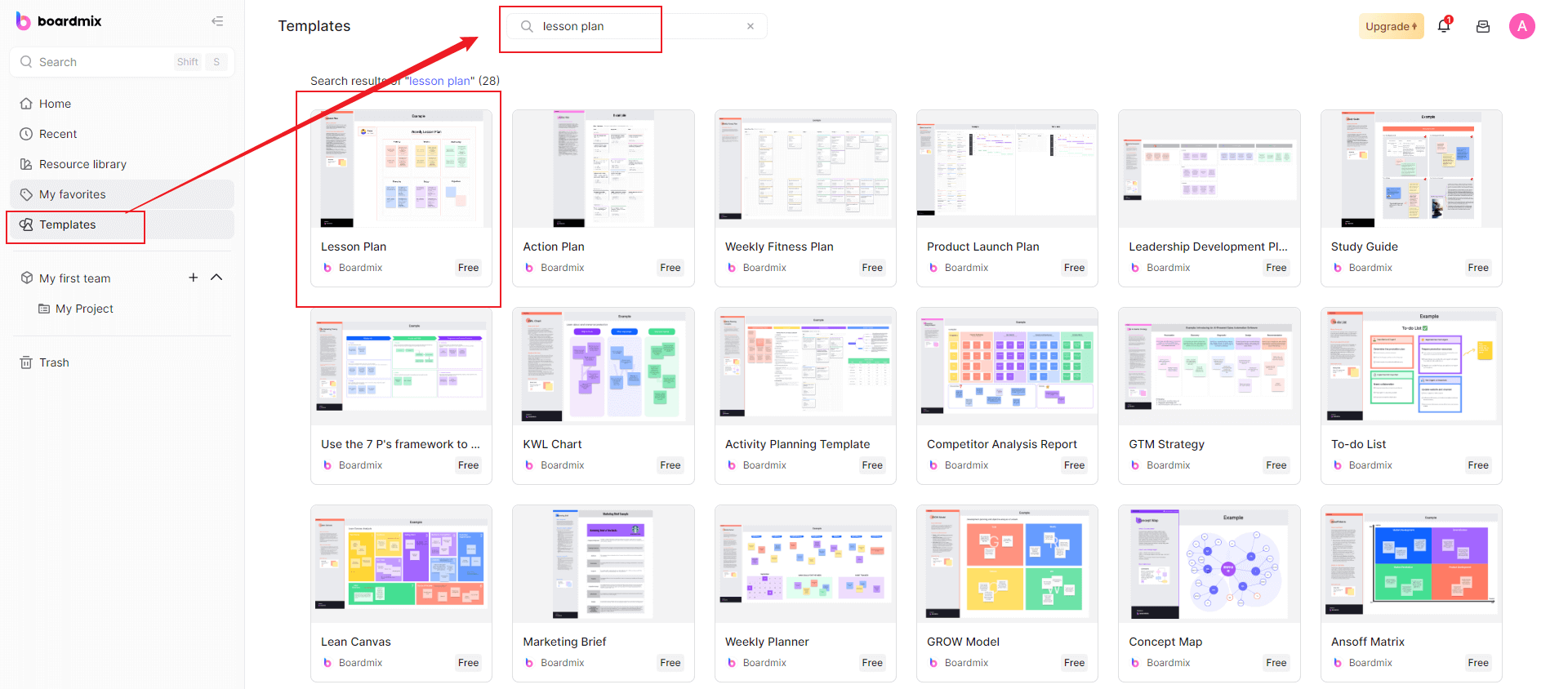
Step 4: Define Your Learning Objectives
In the provided space, input your learning objectives. Remember to make these SMART (Specific, Measurable, Achievable, Relevant, and Time-Bound). These objectives will guide the overall structure of your lesson.
Step 5: Fill in the Template Fields
Once you've defined your objectives, begin filling in the template fields. These typically include sections like 'Introduction', 'Materials Needed', 'Activity Description', 'Assessment', and 'Closure'. Be as specific and detailed as possible to ensure clarity when delivering the lesson.

Step 6: Leverage Boardmix's AI Suggestions
As you fill in the template, Boardmix's AI algorithms will provide suggestions for educational content, activities, and assessments based on your inputs. Take advantage of these recommendations to enrich your lesson plan.
Step 7: Customize Your Lesson Plan
While Boardmix's templates provide a great starting point, remember you have the flexibility to tailor your lesson plan. Add or remove sections, modify suggested activities or content, or reorganize your lesson structure to best suit your students' needs.

Step 8: Review Your Lesson Plan
Once you're satisfied with your lesson plan details, review it thoroughly. Check for any mistakes or areas for improvement.
Step 9: Save and Share Your Lesson Plan
After finalizing your lesson plan, save it for future reference. You also have the option to share it directly with fellow educators or students from the Boardmix platform.
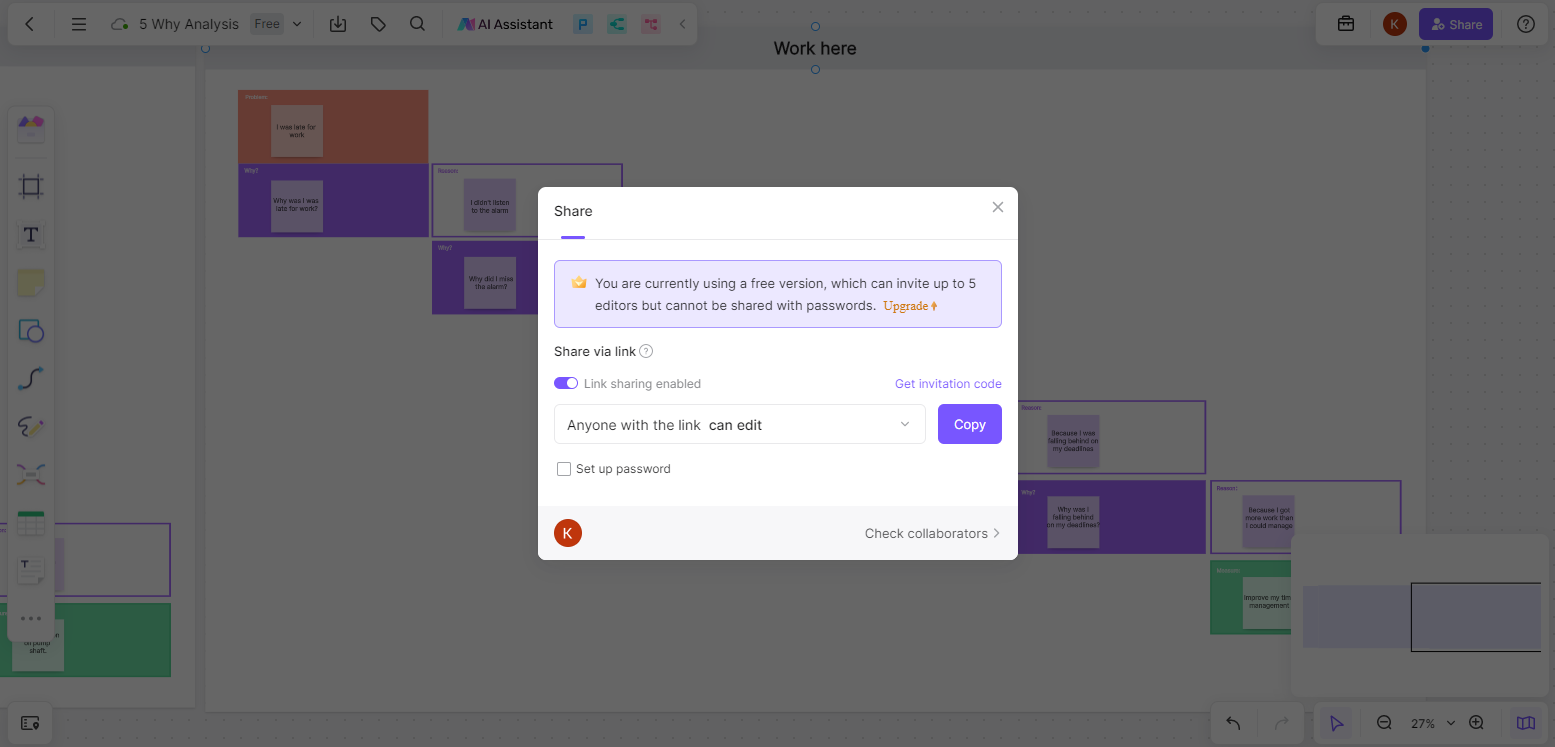
Using Boardmix's templates simplifies the process of creating well-structured and effective lesson plans. It saves time, provides structure, and offers useful AI-generated suggestions to enhance your lesson delivery.
3 Practical Examples of Lesson Plan
Given the diversity in educational methods and subjects, lesson plans can greatly differ from one another. However, all should aim to offer structured, comprehensive guidance for effective teaching. Below are examples of lesson plans for syntax, the EDTPA method, and for elementary school students.
1. Syntax Lesson Plan Example
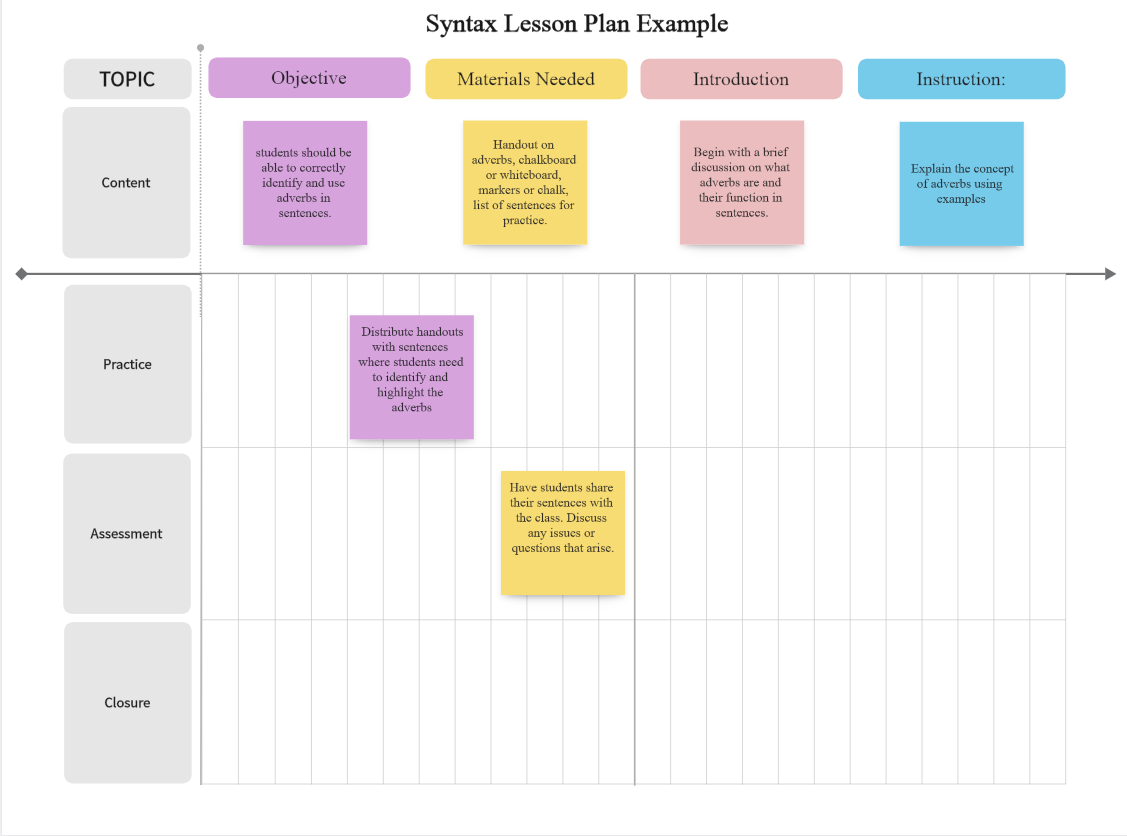
Objective: By the end of the lesson, students should be able to correctly identify and use adverbs in sentences.
Materials Needed: Handout on adverbs, chalkboard or whiteboard, markers or chalk, list of sentences for practice.
Introduction: Begin with a brief discussion on what adverbs are and their function in sentences.
Instruction: Explain the concept of adverbs using examples. Write sentences on the board and underline the adverbs. Discuss how they modify verbs, adjectives, or other adverbs.
Practice: Distribute handouts with sentences where students need to identify and highlight the adverbs. Afterward, ask them to write their own sentences using adverbs.
Assessment: Have students share their sentences with the class. Discuss any issues or questions that arise.
Closure: Recap the main points about adverbs. Encourage students to use adverbs in their daily conversation and writing.
2. EDTPA Lesson Plan Example
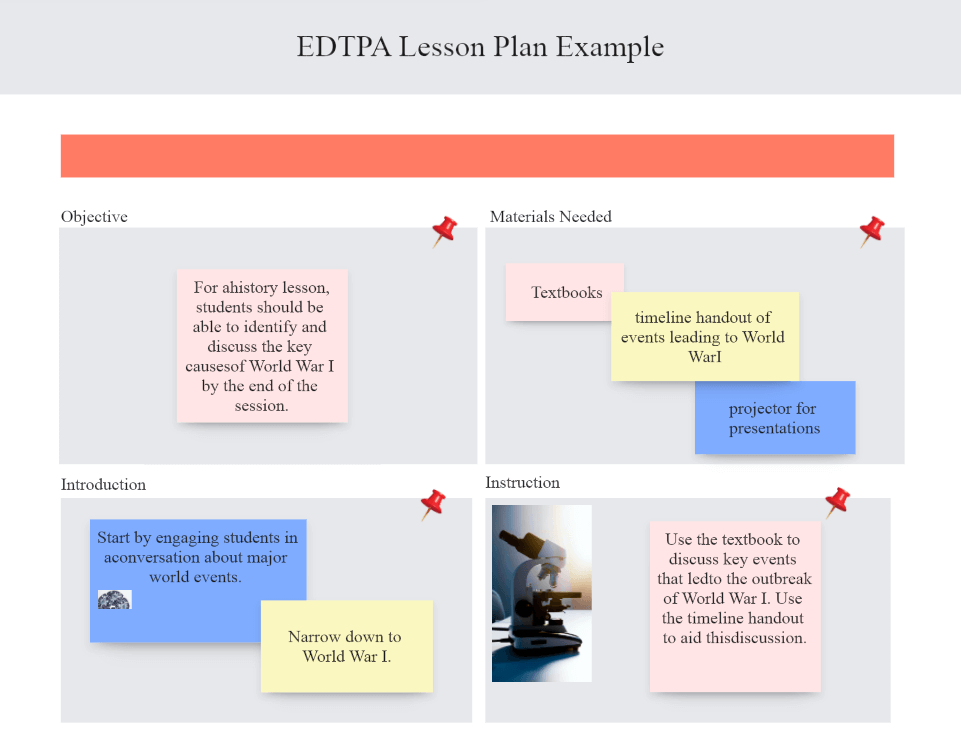
Objective: For a history lesson, students should be able to identify and discuss the key causes of World War I by the end of the session.
Materials Needed: Textbooks, timeline handout of events leading to World War I, projector for presentations.
Introduction: Start by engaging students in a conversation about major world events. Narrow down to World War I.
Instruction: Use the textbook to discuss key events that led to the outbreak of World War I. Use the timeline handout to aid this discussion.
Practice: Divide students into groups and assign each group a key event that contributed to World War I. Have each group prepare a brief presentation about their assigned event.
Assessment: The group presentations will serve as the assessment. Listen for the accuracy of the information and the connection each group makes to how their event contributed to the outbreak of World War I.
Closure: Summarize the main points discussed during the lesson. Encourage further reading and exploration on the topic.
3. Elementary School Lesson Plan Example

Objective: By the end of the lesson, students should be able to count from 1 to 50.
Materials Needed: Number flashcards, counting video or song, chalkboard or whiteboard, markers or chalk.
Introduction: Begin with a short review of numbers 1 to 10.
Instruction: Using flashcards and repetition, gradually introduce numbers beyond 10. Break this down into manageable chunks (11-20, 21-30, etc.).
Practice: Integrate a counting video or song for an engaging learning experience. Have students follow along with counting out loud.
Assessment: Ask individual students to count as high as they can. Offer help as needed.
Closure: Recap by counting together as a class once more. Encourage practicing at home.
Conclusion
In this comprehensive guide, we've delved into the crucial role of engaging lesson plans in the educational landscape. By exploring the key elements essential for crafting compelling lesson plans and providing practical insights into their implementation, educators are equipped with the tools they need to transform their teaching practices.
With lesson plan templates on Boardmix, teachers can streamline their planning process while maximizing student engagement. As educators strive to create dynamic and impactful learning experiences, the art of designing engaging lesson plans stands as a cornerstone of effective teaching. Start designing your lesson plan on Boardmix now!













